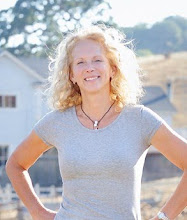What kind of pigs do we have on the farm?
We have 5 different breeds: Duroc, Hampshire, Berkshire, Tamsworth and Gloucester Old Spot. We mix the breeds to create a strong, healthy animal that will do best in our unique area.
How long is a pig pregnant?
A mama pig (sow) will be pregnant for 3 months, 3 weeks and 3 days, give or take. When the babies are born they come out really clean. The mamas don’t have to lick them at all so they are not used to being touched. If you pet a baby pig it will jump straight up in the air and squeal from the odd sensation of your touch.
Why are the pigs at Tara Firma Farms so friendly?
Well, we coax them with a little organic Straus ice cream when they are little! They stick their heads into the bucket and we pet them until they are used to our touch. Doesn’t take too long!
Photo of our pigs by Nathaniel Coon, aren’t they cute?

We raise our pigs to approx. 8 months old & 250 lbs.
What do the pigs do on the farm?
They fertilize and dig up rocks! We have certain pastures with lots of rocks and the pigs dig those up when they are rooting for bugs, grubs and turnips!
Why are pigs always playing in the mud?
Pigs don’t sweat! So when it is hot out they need to cool off. By making mud holes to lay in, they can cover themselves with mud, kind of like sun screen. Good news it works, bad news is they get itchy when the mud dries and then they want to be scratched. You can be a scratching post for them!
What it the funniest thing about Pigs?
Around 5pm, as the days cool off the pigs wake up from a lazy, snoozing day and start to play. And when I say play I mean Play Big! They run, jump and twirl. The 8 week old piglets will sneak out and run around the farm like a gang from New York! However, the second they are startled by anything they run as fast as they can back to their mama!
All in all the pigs are the most fun here on the farm! And we have lots of babies just born, so come out to see then and maybe you and a piglet can go for a walk!
Tara Smith






